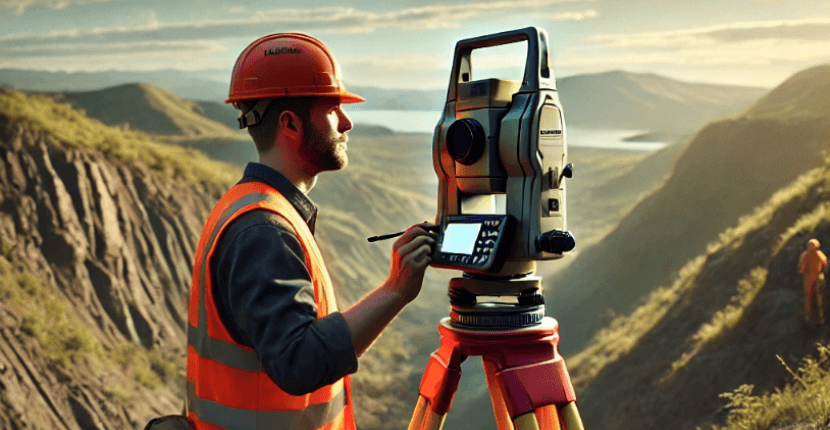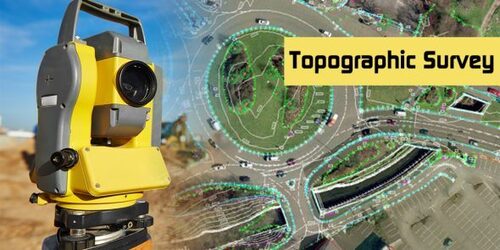Crucial Devices and Techniques in Laying Out Design
The self-control of establishing out design counts greatly on a suite of vital tools and techniques that underpin the precision and performance of task implementation. Instruments such as property surveyor's levels, total terminals, and advanced GPS technology are essential for establishing accurate recommendation points. Furthermore, the integration of typical techniques with contemporary techniques, including geospatial evaluation and 3D modeling, uses considerable benefits in picturing site conditions. Understanding just how these aspects interact is essential for enhancing and decreasing errors task outcomes, yet the subtleties of their application frequently continue to be neglected. What ramifications does this hold for future design methods?
The Significance of Accurate Dimensions

The value of accurate dimensions prolongs past plain conformity; they are essential to the overall efficiency of design processes. Errors can bring about worldly waste, job hold-ups, and boosted labor costs, ultimately influencing the project's bottom line. In addition, precise dimensions boost the top quality of the final product, making certain that it performs as intended and satisfies the expectations of stakeholders - setting out engineering.
In addition, the significance of precise measurements appears in different design self-controls, consisting of civil, mechanical, and electric design. Each area demands a distinct approach to measurement, yet the underlying necessity for precision remains constant. As projects become increasingly complex, the dependence on exact dimensions will just escalate, emphasizing the demand for constant innovations in dimension methods and innovations. Therefore, cultivating a society that focuses on accuracy is important for the future of engineering.
Important Devices for Laying Out
Laying out, a critical phase in the design and building procedure, depends greatly on particular devices that ensure precise area and positioning of structures. Among these devices, the surveyor's level stands out, offering specific horizontal dimensions essential for developing reference factors. This instrument makes it possible for designers to establish elevation modifications and keep uniformity across the job website.
The total station is one more essential device, incorporating digital distance measurement with angular measurement capacities. This modern technology enhances effectiveness and precision in recording spatial data, permitting reliable site design and preparation.
In addition, making use of measuring tapes and marking devices, such as chalk lines or risks, is fundamental for momentarily marking boundaries and crucial points on the website. These basic devices, though basic, are essential for guaranteeing clear interaction amongst the construction team regarding job specifications.
Last but not least, general practitioner technology has actually gained grip in laying out procedures, giving real-time placing information and dramatically boosting precision over typical approaches. Jointly, these necessary devices create the foundation of efficient laying out practices, ultimately contributing to the successful execution of engineering and construction projects.
Advanced Surveying Methods
Advanced checking strategies play a critical duty in boosting the precision and performance of engineering tasks. These methods encompass a range of methodologies that give precise data for design and building and construction. Typical techniques, such as progressing and triangulation, have actually developed right into a lot more advanced approaches, consisting of Overall Station studies and Worldwide Navigation Satellite Systems (GNSS)
Overall Station devices integrate digital theodolites with distance measurement capabilities, enabling land surveyors to accumulate specific area information with fantastic speed. This technology dramatically lowers errors linked with manual dimensions and offers real-time information processing. GNSS offers unequaled precision for large-scale jobs by making use of satellite signals to identify precise positioning, which is essential for making sure and lining up frameworks compliance with design specs.
In enhancement to these devices, progressed techniques also integrate geospatial analysis and 3D modeling. These techniques make it possible for designers to visualize terrain and site conditions a lot more properly, facilitating much better decision-making during the planning phase. By utilizing these sophisticated surveying techniques, engineering jobs can attain greater precision in design, minimize rework, and eventually boost total task success.
Digital Innovation in Engineering
The assimilation of digital innovation has reinvented design practices, improving both efficiency and accuracy throughout numerous techniques. Tools such as Building Information Modeling (BIM) help with the visualization and management of More about the author complex tasks, permitting designers to work together perfectly and make informed choices. This modern technology makes it possible for the development of in-depth 3D designs, which can be examined for structural integrity and performance prior to building and construction starts.

The application of expert system and device discovering in design processes additionally enhances anticipating upkeep and optimization of resources. These innovations allow the evaluation of large data collections, resulting in better projecting and improved task outcomes. On the whole, digital technology is improving the engineering landscape, driving advancement, and making sure that projects are finished with greater performance and decreased threat. As the market remains to progress, embracing these devices will be crucial for future success.
Finest Practices for Execution
When implementing digital modern technology in engineering, it is vital to develop a calculated strategy that aligns with job objectives and organizational abilities. A thorough evaluation of existing operations and technology facilities is necessary to recognize spaces and possibilities for enhancement. Involving stakeholders early in the procedure fosters partnership and makes sure that the modern technology meets individual requirements.

Job supervisors should adopt an iterative execution strategy, enabling modifications based upon real-time feedback and efficiency evaluations. This nimble strategy not only minimizes dangers but likewise advertises continual improvement by incorporating lessons learned.
Conclusion
Finally, the combination of necessary devices and progressed methods in establishing out engineering is crucial for making certain accuracy in dimensions and effective job implementation. Using instruments such as land surveyor's degrees, complete terminals, and GPS technology, alongside modern-day evaluating approaches, boosts accuracy and reduces the probability of mistakes. Adopting best practices in application additionally maximizes these procedures, ultimately promoting boosted project outcomes in the engineering and construction industries.
The technique of setting out design depends heavily on a collection of essential devices and methods that underpin the accuracy and performance of job implementation.In addition, the value of accurate dimensions is apparent in various design disciplines, consisting of civil, mechanical, and electrical design. By utilizing these advanced checking techniques, design projects can attain higher accuracy in design, reduce rework, and eventually enhance general project success.
Generally, digital modern technology is improving the engineering landscape, driving innovation, and ensuring that projects are finished with greater performance and decreased threat (setting out engineering).In conclusion, the combination of important devices and progressed methods in establishing out design is important for making certain precision in measurements and effective project execution
Comments on “Topographical Surveying: Accurate Mapping for Land Development Projects”